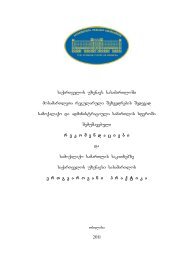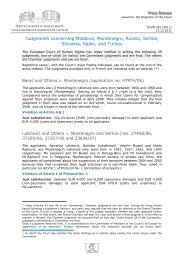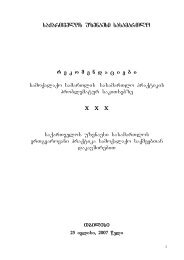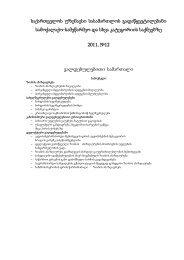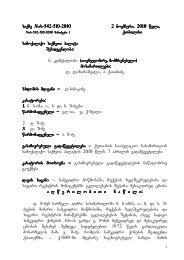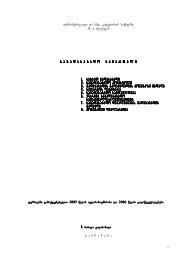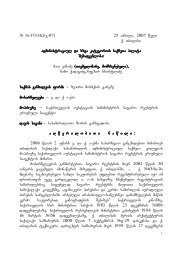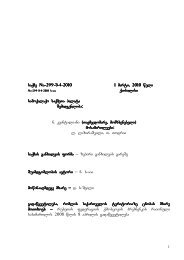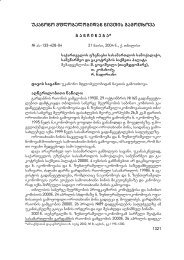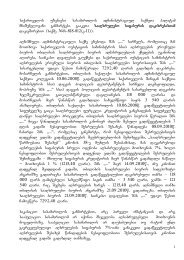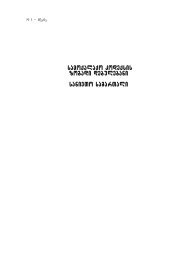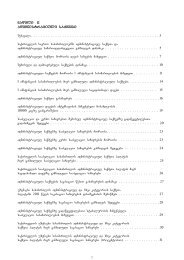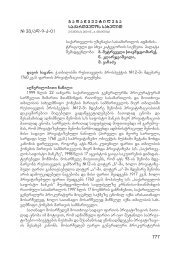marTlmsajuleba kanoni
marTlmsajuleba kanoni
marTlmsajuleba kanoni
Create successful ePaper yourself
Turn your PDF publications into a flip-book with our unique Google optimized e-Paper software.
14. When A and B were caught at the moment of looking into the locket of a shed, they run away. At a distance<br />
from the shed, a car was found equipped with metal cutting equipment. The court qualified this case as attempted<br />
theft(UK) 15 .<br />
15. For the purpose of stealing a car, A was testing the wheels of parked vehicles, in order to find out which one<br />
did not have a locked wheel. The court qualified this conduct as an attempted theft. (Germany 16 )<br />
As these cases show, the line between preparation and attempt is sometimes very thin and depends on specific<br />
test used by the court or specific legislation;<br />
I think legislative and judicial formulations differentiating between preparation and attempt should be divided<br />
into two parts:<br />
1. Formulations for whom the starting point is revelation of criminal intent;<br />
2. Formulations, for whom the starting point is the completion of the crime<br />
1. Formulations for whom the starting point<br />
is revelation of criminal intent;<br />
2. Formulations, for whom the starting<br />
point is the completion of the crime<br />
According to US model Penal Code, attempt is a<br />
“subustantial step” directed to the commission of<br />
the crime<br />
According to German Penal Code (art. 22) “criminal<br />
attempt is committed by if the person, according<br />
to his own belief immediately embarks upon the<br />
commission of the crime” (unmittelbar ansetzt)<br />
According to criminal law of 1981 of UK, “If the<br />
person, in order to ...commit a crime commits an<br />
act which is more then preparatory, he will be<br />
punished for the attempt”<br />
Accordingb to art. 121 of the criminal code of<br />
France, attempt of a crime is “commencement of<br />
execution” 17<br />
According to unequivocality test,defendants<br />
conduct is of such nature which are “as as to be<br />
in itself sufficient evidence of the criminal intent<br />
with which it is done. A criminal attempt is an act<br />
which shows criminal intent on the face of it” 18 .<br />
According to proximity test, defendants actions<br />
should come close to the completed crime. This may<br />
mean time or special proximity 19 .<br />
The last act test means that the defendant exercises<br />
a series of actions and his last action constitutes<br />
criminal attempt. 20<br />
“Corpus delicti” theory, means that upon the<br />
attempt, defendant carries out some element of an<br />
offence or an aggravating circumstance” 21<br />
23



